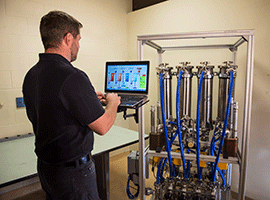###
About PNNL
Pacific Northwest National Laboratory draws on its distinguishing strengths in chemistry, Earth sciences, biology and data science to advance scientific knowledge and address challenges in energy resiliency and national security. Founded in 1965, PNNL is operated by Battelle and supported by the Office of Science of the U.S. Department of Energy. The Office of Science is the single largest supporter of basic research in the physical sciences in the United States and is working to address some of the most pressing challenges of our time. For more information, visit the DOE Office of Science website. For more information on PNNL, visit PNNL's News Center. Follow us on Twitter, Facebook, LinkedIn and Instagram.

 , PNNL “rewrote the book” on the operation of ORC systems in an effort to make a transformational advance in the technology and its use within the geothermal industry. The PNNL-developed system—the Harmonic Adsorption Recuperative Power System (HARP)—uses a novel approach that eliminates the need for the evaporator, high pressure pump, and condenser in ORC systems.
, PNNL “rewrote the book” on the operation of ORC systems in an effort to make a transformational advance in the technology and its use within the geothermal industry. The PNNL-developed system—the Harmonic Adsorption Recuperative Power System (HARP)—uses a novel approach that eliminates the need for the evaporator, high pressure pump, and condenser in ORC systems.